Anne Parry owner of Felin Ganol watermill told me about this stoneground white flour she had, a single variety called Amaretto that was low in protein 10.5%. This flour is being sold as an All Purpose flour but she thought it had a great flavour. I couldn’t wait to try it. I did and love it. Before I write my post on Amaretto flour I wanted to talk about the importance of growing, milling and baking with low protein wheats.
There is a myth in the baking world that low protein flours don’t produce good bread. In Britain we grow wheat varieties which happen to be low protein and in order for millers to sell this wheat they believe they’re faced with two choices; either add gluten to 100% homegrown wheat or mix-in higher protein wheat from countries such as Canada or Kazakhastan. (sometimes up to 50%)
Low protein flour for bread doesn’t frighten me. Have I mention I bought a 25kg sack of 9% protein roller mill white flour from Shipton back in the summer?
I bought it because John Liste, the owner of Shipton mill said it was a flour they developed for a London French Bakery. Oooh I thought…was keen to try it. Other sacks of flour have come and gone but this 9% sack is still here. It’s bland. OK, I know white roller mill flour is bland but I couldn’t see the point of this one. Shipton mill make a white roller mill flour I really like, which I would happy recommend to you with lovely crust flavour. You see, the allowances for error, or more likely neglect with low protein doughs are narrower, and being such a neglectful baker I need a reason to stay attentive. This flour didn’t deliver for me.
The two loaves above were made back in August from the Shipton white roller mill flours I mention.
The left loaf was made from the flour I would recommend, their organic no.4 at 12% protein. If you’re making an all-white loaf this makes a great tasting crust, lovely light crumb.
On the right is the loaf made from the 9% protein flour I tried but was very disappointed with it. Obviously as you can see it still makes a good looking loaf.

Above the Shipton 9% protein.
Below the Shipton organic No.4, 12% protein.

Why Low Protein Flours?
The point I’m trying to make with the 9% protein flour is how I or anyone else can make good bread with them. They require a slight different approach in handling and paying a little more attention initially while getting to know it.
It’s really important for me to get this across. Why?
Because we in this country seem to be obsessed with high protein flours, as if only they are good enough to produce bread.
Why should we change?
Because if we bakers can develop our skills to work with lower protein British flours it will mean the millers won’t have to add gluten or add foreign high gluten flour.
Ultimately this is what it’s about:
Wouldn’t our bread be more interesting if we grew wheat for flavour rather than for its performance in a bakery’s mixer?
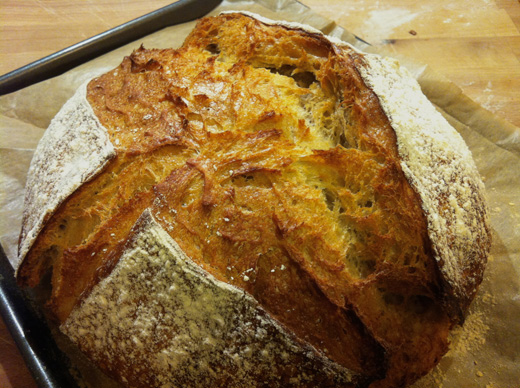
Above, 10.5% stoneground white Amaretto from Felin Ganol watermill in Wales. This flour at this protein level being stoneground is not seen ideal for bread making. It took me 2 goes at it, the first I was testing it out, under-proved it to see how far I could push the dough. The second attempt proving it for longer I produced this loaf with exactly the crumb I was hoping for.
Below is the crumb, light how I wanted it, full of holes…no not the big ones! Look closer there’s lots and lots of little and medium holes, indication of the lightness I was aiming for. I will write in detail about it in the Amaretto post next.
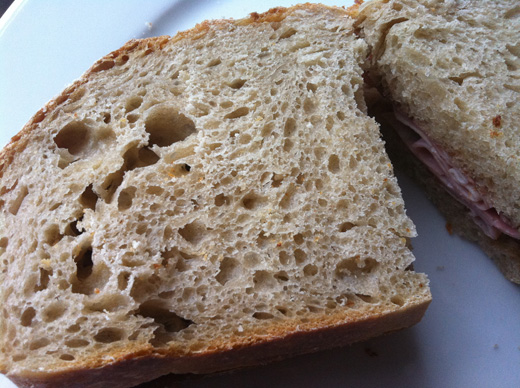
Crisp Crust
A tip from my experience; lower protein flours produce fantastic crust…good if like me you like crust. Yes there are other factors too in good crust but generally as I’ve gone down on the protein percentages of my flour my crusts have improved significantly. I’ll get a chewier crust using say a strong Canadian bread flour I buy in Waitrose.
Think about baguettes and they’re all about crust, it’s normal to use a T55 for them which sits at 11% protein.

White Roller Mill & White Stoneground Flour
There is a difference between a 9% protein roller mill flour and one such as the stoneground Amaretto 10.5%. It will be easier handling the 9% roller mill because it will have some of that extensibility you would expect, what I call chewing-gum-like stretchiness.
The stoneground flour suffers from having some of whole wheatberry in the white flour, it will have bits of the germ and outer layer. The stones crush the whole berry and then the sieving process removes large particles. From my experience this produces what I’ve described before as short gluten strands. You might remember I used this term when describing Roland’s stoneground ancient grain dough here.
On the plus side it’s what makes this flour more flavoursome and more nutritious than the lean roller milled flour.
It would be easier if I could get you to feel both types of dough than trying to describe it. I would compare the feel of stoneground dough like that of Emmer or Khorasan doughs I made back in the summer.
Dough from the white stoneground Amaretto.
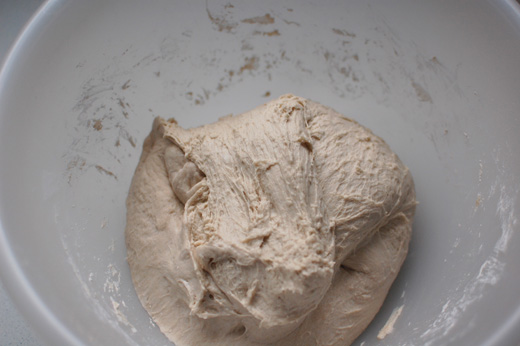
Importance of Feeling Dough
This is where feeling your dough all of the time comes in. You should feel all doughs, not because it’s “magic” as I’ve heard said once, but because knowing how it feels you’re learning how to feel for differences, therefore adjusting your approach.
There’s differences with varieties of grains like common wheat, Emmer, spelt, rye but differences will also occur within those varieties. This single variety of Amaretto wheat will have its own characteristic which may well feel different to a variety like Tybalt Spring. There’s also other differences I don’t hear bakers talk about, the seasons. The same wheat variety will change according to the growing condition and the weather pattern it’s had.
I’ve mention in my French posts with Roland how the change of climate and soil can have an effect in the resulting wheat, and millers in this country will say the same. I’ve been told by John Liste, Michael Stoates or Anne Parry about weather differences.
The same grain grown by the same farmer can change because of the weather it has received while growing, the weather conditions around the days of its harvest and then the conditions of how it’s stored.
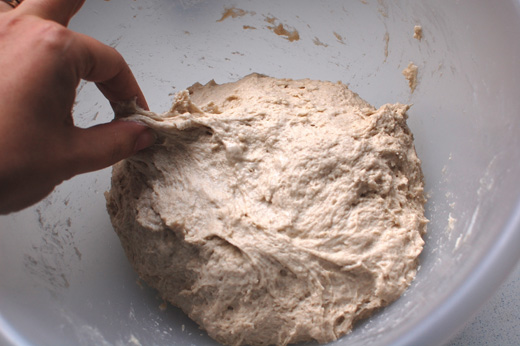
Relationship Between Miller & Baker
The variables of the wheat is why a miller has an important and difficult job the way I see it. The miller wants to sell the flour and therefore has to make it to a standard the baker will be happy using. The miller becomes the alchemist, they pick and decide which wheat to buy, and which varieties to combine depending on the end use of the flour. Most of the time bread flour will be a combination of wheat varieties.
My whole point of this post is about the relationship between Miller & Baker.
If we bakers, stopped being so hung up on chewing-gum-like flours and learnt the skills of dealing with all kinds of wheats, then the miller will have a larger window of choice of interesting varieties to mill for us. What a richer baking world that would be.
We have learnt the skill of turning the most unpromising rye-weed into great breads, therefore we can turn what may appear unpromising low protein home grown wheat into a fantastic tasting loaf. Help the millers pick wheat for flavour and this in turn will drive the farmers to grow more interesting varieties.
At one point during Dan Lepard’s workshop, Dan said something very compelling which was, we can look through history and see paintings of great bread being made, this bread would’ve been made with the local grown wheat, there’s nothing stopping us from doing this now.

In these photos I’m trying to convey across the short gluten strands of the stoneground Amaretto, as soon as you pull it apart it breaks.
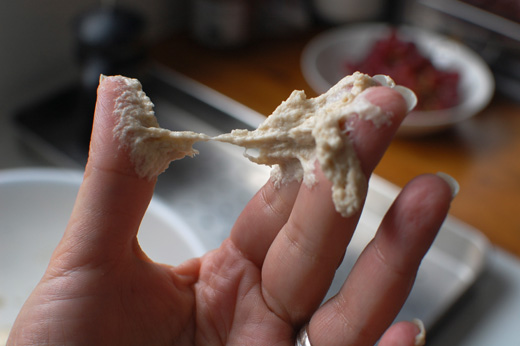
The White Stoneground Challenge
If you’ve followed my baking journey you will know how much I love white roller mill flour but I said I was going to tackle white stoneground, and to add to the challenge I’m using a low protein one, this Amaretto variety. In my next post I will write in detail of my experience.
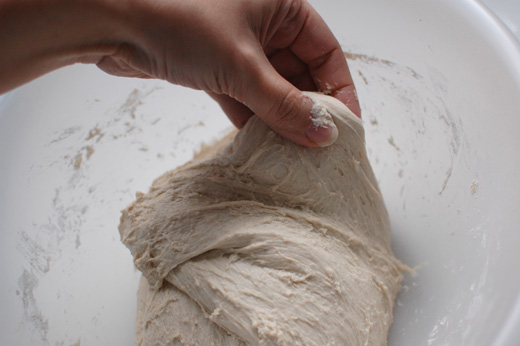
Seek Out Interesting Flours Not Formulas
I’ve noticed amongst some bakers the constant search for formulas of particular breads perhaps with a fancy name. So what. The flour you’re using will be different to that of the original baker. You’re not going to get the same result, same taste. I’m not saying don’t follow a recipe, I do, I have bread books and I’ll follow a recipe. That’s not what I mean.
I want to read enthusiastic bakers writing about a particular flour and why they liked it or didn’t like it. What adjustments they’ve made and the difference it had in the resulting crumb. Find your flour, work with it, making your own formulas for it.
Please don’t think I’m having a go at people who want to bake a loaf for their family. I’m really appealing to those who see themselves as serious bakers. I’m appealing to serious baker, enthusiastic baker, semi-professional baker, professional baker…choose to obsess about the flour.
As Jean-Philippe said to me in Paris back in June, “It’s the flour, Azélia”. I listened.

Be Demanding of Your Miller
If we at the consumer end show a demand for interesting flours this will eventually feedback into the chain of miller and farmer. I’m not saying it has to be stoneground, I still bake and eat roller mill flour. I’m saying find your flours, seek millers or sellers and ask them the questions.
Ask where is the wheat from? What variety? What harvest even…just ask. Having the dialog is the start of a good relationship between you and the supplier and if the supplier doesn’t know and is not prepared to find out change to another.
All mills I’ve bought flour from will email if asked details of the flour, the flour specification, listing things like protein, moisture and whether it has added gluten or enzyme, what calories, starch etc. I haven’t seen one that says where the wheat is from or what variety it is. Ask them.
A good miller will want the relationship. A good miller will know where the wheat is from and what variety it is. I think most of us complain how everything has become universal and the consequences are blandness and monotony. It’s happen to the wine industry and the baking world is no different.
We, as bakers do have a choice and maybe there will be a time when Anne Parry’s dream will come true, when bakers talk of flour in the same terms as wine, “Do you remember that Tybalt Spring flour of 2011? That was a good year wasn’t it?”



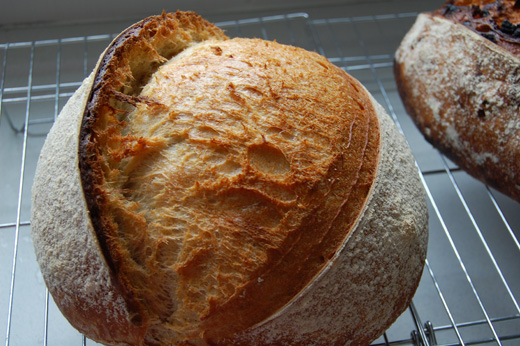

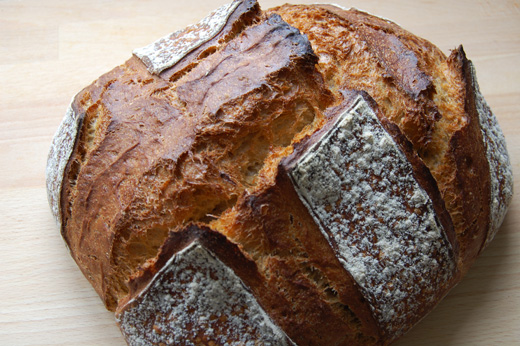



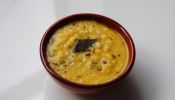




















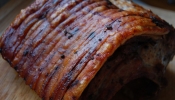



{ 23 comments… read them below or add one }
Fascinating post. The loaf made with the stoneground four looks stunning – I’d love to how you did it!
truly inspiring azelia. You capture the beauty that is diversity and provenance. Most professional bakers are truly stuck in the protein/gluten matrix, mainly because they do not have the skill to get less exstensible doughs through their machines. When working by hand the baker feels the difference and can adjust water, intermediate and final proving times accordingly. I read about anne parry on bethesda baking. I must try their flour as I am often in wales.
did you read my article on baking sacred (real) bread? It encourages bakers to believe in their bread
http://www.fromthehearth.co.uk/more-thoughts-on-sacred-bread-baking
Many thanks for another fabulous article
honey in the hearth
As you know my experience of asking about flours is different from yours, I think it depends on who is asking My opinion, and it is only an opinion, is this: I think what happens, particularly if you remember being a new baker is that lower protein flour doughs are harder to handle if you are inexperienced than the high protein ones, and like the ‘whiter than white’ underwear that we are pushed to want by advertisers, similarly images of ‘attractive’ plump rounded loaves are what people aspire to because that is what they see. We are very imitative as a species, it’s one way we learn, by imitating people and it takes quite a lot to go against the flow. I remember making baguettes early on when I started baking with T55 flour and I couldn’t control it at all, couldn’t shape it, couldn’t score it and in fact, I haven’t tried again for a long time. It would be good for me to try and when I find some energy to bake again I will. You have patience and persistence and great talent xx
My opinion, and it is only an opinion, is this: I think what happens, particularly if you remember being a new baker is that lower protein flour doughs are harder to handle if you are inexperienced than the high protein ones, and like the ‘whiter than white’ underwear that we are pushed to want by advertisers, similarly images of ‘attractive’ plump rounded loaves are what people aspire to because that is what they see. We are very imitative as a species, it’s one way we learn, by imitating people and it takes quite a lot to go against the flow. I remember making baguettes early on when I started baking with T55 flour and I couldn’t control it at all, couldn’t shape it, couldn’t score it and in fact, I haven’t tried again for a long time. It would be good for me to try and when I find some energy to bake again I will. You have patience and persistence and great talent xx 
hi Max – will post photos of step-by-step in next one
hi Joanna – firstly thank you for reminding me it’s T55 not T65 for the normal baguettes! I had even google while writing to confirm the protein level for the T55 and then my mind switched since I’m using T65 from Matthews mill for my baguettes.
I had even google while writing to confirm the protein level for the T55 and then my mind switched since I’m using T65 from Matthews mill for my baguettes.
Which brings me to your other point with the experimenting with baguettes and not succeeding, have a go at the Mathews imported flour I mention, the T65. Dan recommended it and I think it makes a cracking hybrid baguette, good crust, lovely creamy colour.
I’ve come to the point where I don’t care about my baguettes fulfilling someone’s criteria. I bake them at the weekends for breakfast and sandwiches, sometimes they’re more doughy than other times but quite frankly I don’t give two hoots since I’m not entering a competition. I can’t even get the bottom crust done as well as I could since I don’t bake on stone, I’m happy as long as the top crust shatters.
Yes when you start baking it is easier to start with the higher protein flours that’s where I started. It’s why I wanted to point out I’m really talking to those who consider themselves serious bakers, including those who make money out of it.
I’ll email you the link for the T65 flour later. I’m doing a very quick post on my weekend baguettes in a few days, really to show how I make them to fit around my life. Thanks for all your support, means a great deal xx
Yep Michael – you’re right, it’s about being on Auto-Pilot…about how many minutes on speed one or speed two in the mixer. Even small supposedly artisan bakeries want the flour to perform to their already learnt standard, it’s difficult to adjust learning and I get that totally…you want to get the dough mixed without thinking because you have time pressure to get loaves out of the door.
But I think there’s room for a loaf in that bakery made from a speciality flour and sold as such, to be thought provoking not just for us making it but for the customers buying it.
I’m now going to make myself some brunch and read your article
Wonderful..wonderful information, Azelia! Am bookmarking for future read and reference. Posting it on my FB page for others to get baking a perfect loaf
Thanks Sanjeeta
Really interesting, thanks
This post is absolutely fascinating. I love reading the articles on your site, although they always make me realise how far I have yet to go to be able to even call myself a bread baking enthusiast! I love playing around with flour and loaves in the kitchen, but still at a very basic level. Posts like these really help to broaden my knowledge and encourage me to try new things.
I’m really pleased they do Little Loaf – You sound like me, always playing around and seeing what happens, it’s the only way to learn really, continuously practicing. Keep going don’t stop
Brilliant post Azelia, thank you!! May I put a link to it on our website? A
Yes do Anne! Hope you didn’t mind me quoting you?
Wonderful post Az – a really important message, put across with great passion.
Thanks Geraint, I get inspired by the great people I encounter who are passionate about milling, flour, bread..including yourself.
Honoured that you did!
can’t thank you enough Azelia… ! i can bake a bread on my own, its like a dream come true for me… i call d sourdough starter my angel !!

your article has come just when i was feeling lost .. tried to bake a complete wheat bread, last week for the first.. but the gluten was sooo weak !! it behaved soo differently from the all purpose fl. dough dat i am okay wid now.. i just did not know wat to do with it and how to go about it after d autolysing ! despite dat i let it stand fr 5 hrs chking upon it timely… it was looking all d more hopeless.. y? never took d step of putting it in the oven since it just did not take a stand … literally..
looking forward to your next post ! any advice for this novice is also welcome
Dear Azelia, )
)
Another great post. Looking forward to when you write abt baking with low-protein flours.
And I couldn’t agree with you more that it’s all about the flours. Even with my extremely limited experience with different flours – all, unfortunately, from supermarkets and organic shops wherever I can find them – I can see the difference it makes for the process and taste, nutrition aside.
I was very puzzled once when a seasoned baker told me he uses industrial, bleached flour from a local source, as do his friends who run bakeries, and that I should do the same as it’s much cheaper and it’s what you do with the flour that matters. With all due respect, I disagreed.
I hope one day to be able to explore flours more fully. In the meantime, I task friends and family who go overseas to lug back flours for me if possible. You can see I make myself very popular
I’m sure you already know MC’s blog, http://www.farine-mc.com. Her blog reminds me of yours in the way she profiles artisan bakers and bakeries. It’s a great read!
hi Mue – there are so many variables with bread very difficult to tell you why your bread didn’t rise. Have a look through my posts here:
http://www.azeliaskitchen.net/blog/sourdough-problems-from-my-beginnings/
and this one on the Starter:
http://www.azeliaskitchen.net/blog/life-cycle-of-a-sourdough-starter-part-ii/
See if that helps and then come back with any further questions, ideally specifying exactly what you did and I’ll try my best.
Unfortunately W – it is common. When I asked recently a mill Rep. what their best flour was, his first answer was, “oh it’s expensive…” Yes good flour costs…that is the point of it I think…someone should be able to make a living out of farming, milling and so on, and a baker should also make a good standard of living producing good quality product and charging accordingly otherwise what’s the point? We already have the mass produced rubbish sold through supermarkets, who needs to compete with that?
Yes indeed I have come across Farine! We’ve connected through fb.. and I’m enjoying getting to know her blog.
Interesting post.
I’ve developed a bit of a problem since I last baked sourdough a year or so ago – I only seem to be able to bake sourdough with a very springy (but intensely flavoursome) crumb. The flavour’s usually great but the crumb isn’t what I want. I’ve had some pain au levain for example from my mother’s local bakery where she lives in France that has a lovely soft crumb, that’s almost like good English white bread to eat.
I think I need to try some low protein flours to deal with my bouncy crumb problem.
I was just wondering what’s your preferred – easily obtained – low protein flour (like you, I’m in the South East of England)?
Have you tried Shipton Mill’s 117 for bread? They say it’s for cakes but it seems to be English wheat only and could be a good low protein flour to try. I’ll get some next time I order from them.
Keep up the good work.
hi Barry – It sounds like the bread from your mother’s local bakery has added baker’s yeast mixed with the sourdough. In France Pain au Levain is allowed to contain up to 2% of added yeast, so I discovered when visiting last year. You could try that yourself, I often make hybrid loaves for family and friends and love it.
The other way to achieve a lighter, much lighter, and less chewy-sourdough crumb is to leave the loaf on last rise (once shaped) for many hours, depending on whether it’s winter or summer, anything from 5-12 hours at room temperature until the dough is at stretching point. This is for normal white bread flour, if you’re using properly stoneground where the enzymes are far more active the time will be shorter, the process speeds up.
Staying away from high glutenous flour helps with a softer crumb, also makes superior crust. I use Shipton no. 4 organic flour, it’s 12% protein and good one for crust and light enough.
The natural characteristics of sourdough is the creation of a chewy-texture and in order to counter-balance against that affect you need to do a couple of tricks like I’ve mentioned above or for example adding 30grms of olive oil to a 500g flour recipe would add softness to crumb. Milk will also contribute softness, if adding milk, very small amounts won’t make a difference, but it’s a good idea to scald it to kill glutathione in it.
Hope this helps.
thank you so much for this write up. really.
francis-olive